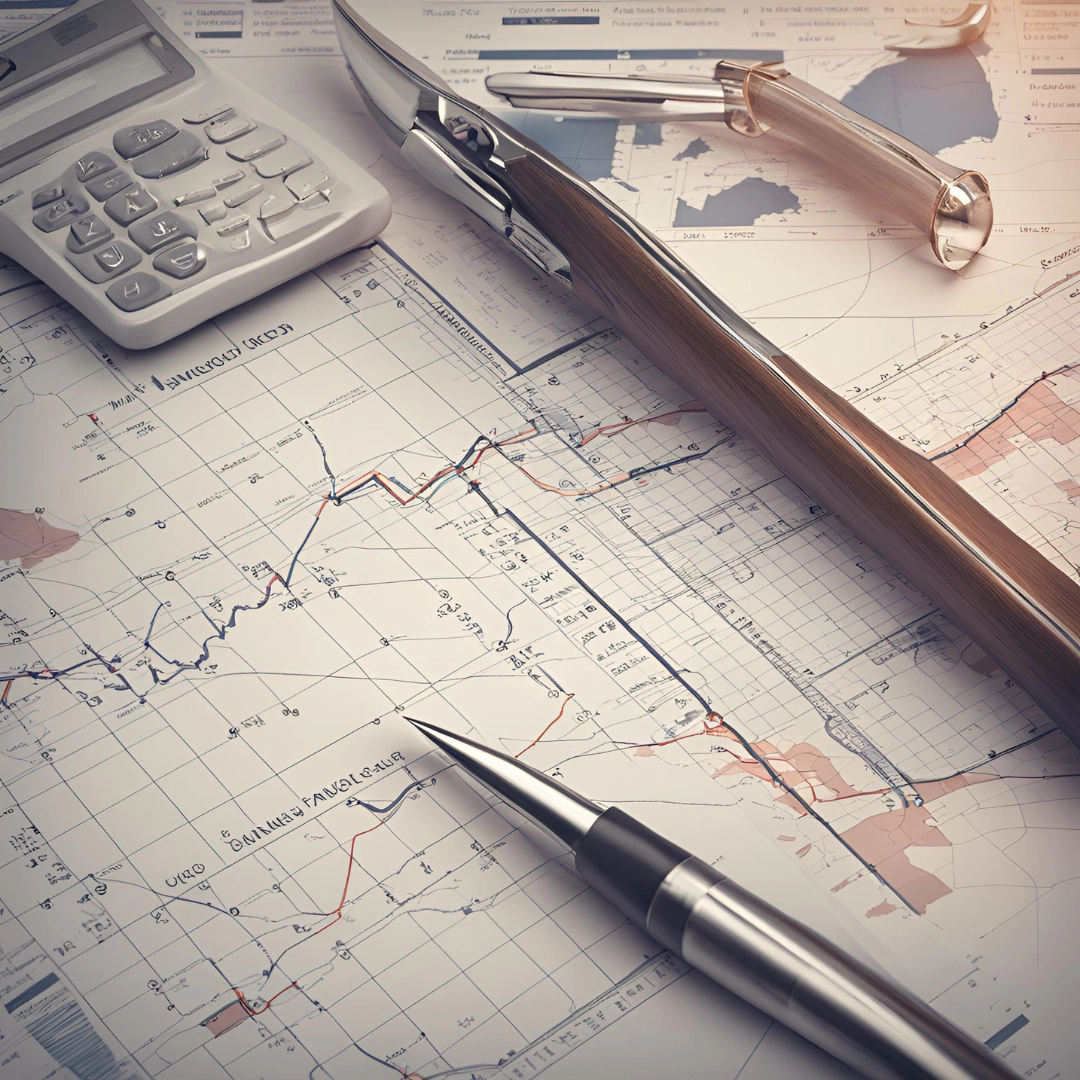Let’s Explore How Economic Indicators Shape Your Financial Analysis
Hello everyone! Greetings from ARTIFICALAB LTD. Welcome to our latest blog post where we dive into the fascinating world of economic indicators and their profound impact on financial analysis. We want to show that understanding these indicators is crucial for your investment decisions, where it is to BUY or SELL, or HOLD your investment assets, portfolios and positions.
Indeed, it is true. Understanding and interpreting economic indicators, along with the ability to quickly retrieve these insights, are crucial factors that determine an investor’s trading success or failure.
Join with us as we explore the key indicators and how they influence investment strategies, market trends, and economic policies. Now, let's get started!
What are Economic Indicators really it is ?
Indeed, they are a kind of indicator tools that specifically provide insights into the overall health and performance of an economy.
Using these indicators' results, investors, policymakers, and analysts can make further informed decisions.
In this blog, we’ll explore three types of economic indicators— leading, lagging, and coincident—and provide six examples of each, along with real-world applications.

"Understanding economic indicators is crucial for financial analysis.
Leading indicators help predict future economic trends, while Lagging indicators confirm past trends, and Coincident indicators provide real-time data on the current state of the economy.
By monitoring these indicators, investors and analysts can make more informed decisions and better manage their financial strategies."
— Mr. Thu Ta Naing, Founder (ARTIFICALAB LTD), MBA (Bangkok University International)
CFA Research Challenge Semi-Finalist 2024 (Thailand)
1. Leading Economic Indicators
Leading indicators are the indicators that predict future economic activity. In fact, they change before the economy starts to follow a particular trend, making them useful for short-term economic predictions.
We have attached some of the Leading Indicators below for your reference. Let's get details into.
Stock Market Returns: Often rise before the economy improves and fall before the economy declines.
Real-World Example: The S&P 500 index often moves ahead of economic recoveries or downturns.
Consumer Confidence Index (CCI): It measures the degree of optimism that consumers feel about the overall state of the economy.
Real-World Example: A rising CCI often indicates increased consumer spending, which can lead to economic growth.
Building Permits: An increase in building permits suggests future construction activity.
Real-World Example: A surge in building permits in a region can signal upcoming economic expansion.
Manufacturers’ New Orders for Consumer Goods: Indicates future production activity.
Real-World Example: An increase in new orders can lead to higher production and economic growth.
Average Weekly Hours Worked by Manufacturing Workers: More hours worked can indicate increased production and economic activity.
Real-World Example: An increase in weekly hours worked often precedes economic upturns.
Yield Curve: The difference between long-term and short-term interest rates.
Real-World Example: An inverted yield curve has historically been a predictor of recessions.
Ok, now, you might get understood a brief of some popular Leading Indicators. Now, let's get ahead to the Lagging Indicators section.
2. Lagging Economic Indicators
Lagging indicators often confirm trends that have already occurred. Typically, these indicators show a change after the economy has begun to follow a particular pattern.
Especially, they are very useful in assessing & validating the current economic direction (whether, up, or down or constant) as well as assessing the government economic policies' effectiveness.
Now, I will show you some of the lagging indicators below with some real-world examples reference.
Unemployment Rate: Often decreases after the economy has started to improve.
Real-World Example: The unemployment rate typically falls after a period of economic recovery.
Corporate Profits: Reflect the health of businesses after economic changes have taken place.
Real-World Example: Corporate profits often rise after an economic expansion.
Labor Cost per Unit of Output: Measures the cost of labor required to produce one unit of output.
Real-World Example: Rising labor costs can indicate inflationary pressures after economic growth.
Consumer Price Index (CPI): Measures changes in the price level of a basket of consumer goods and services.
Real-World Example: CPI often rises after periods of economic growth.
Outstanding Loans: The total amount of loans that have been issued and not yet repaid.
Real-World Example: An increase in outstanding loans can indicate past economic activity.
Inventory/Sales Ratio: The ratio of a company’s inventory to its sales.
Real-World Example: A high inventory/sales ratio can indicate that sales have slowed down after a period of growth.
These above Lagging Indicators are some of the most common lagging ones you can rely on for further decision making. However, there's another one type of indicator still left, which is the Coincident Economic Indicators.
Let's explore what does that mean, and what can they possible provide us?
3. Coincident Economic Indicators
Coincident indicators occur simultaneously with the economic activities they signify. The most important fact is that they provide real-time data on the current state of the economy. So, if you want to assess current macroeconomic situations, you should rely on these coincident indicators.
Gross Domestic Product (GDP): It measures the total value of goods and services produced in an economy.
Real-World Example: GDP growth rates are used to assess the current economic performance of a country.
Employment Levels: The number of people currently employed.
Real-World Example: Rising employment levels indicate a healthy economy.
Retail Sales: It measures the total receipts of retail stores.
Real-World Example: Increasing retail sales suggest strong consumer spending.
Personal Income: The total income received by individuals.
Real-World Example: Rising personal income levels indicate economic growth.
Industrial Production: It measures the output of the industrial sector.
Real-World Example: An increase in industrial production signals economic expansion.
Business Revenues: The total income generated by businesses.
Real-World Example: Rising business revenues reflect a growing economy.
So, these are the three types of economic indicators, and some of the most common ones in each type, as shown above.
However, we need to also understand why Financial Analysts used these in their financial analysis case studies. Let's explore their applications below. Stay with us!
Why every Financial Analyst need to understand Economic Indicators?
Before we deep dive into that, let's talk about first why financial analysts need to consider and use these indicators? Did these indicators tell pre foresights? Or did they tell us about the current macroeconomic conditions? Or did they tell us about the past events that is currently impacting on us?
Well, the answer is as follows. There are several numerous benefits financial analysts can benefit from that. If you become a CFA (Chartered Financial Analyst) one day, you will probably be using these as well.
Predicting Market Trends:
Economic indicators help analysts anticipate market movements. Leading Indicators help us that in this situation.
In fact, by understanding leading indicators, such as stock market returns and consumer confidence indices, analysts can predict future economic activity and adjust their investment strategies accordingly.
Assessing Economic Health:
If you, as a financial analyst, wants to access current economic situations, you might need to depend on the Coincident indicators. For example, indicators like GDP and employment levels, provide real-time data on the current state of the economy. This information is crucial for analysts to assess the economic environment and make informed decisions about asset allocation and risk management.
Validating Economic Trends:
Lagging indicators, such as unemployment rates and corporate profits, confirm trends that have already occurred. These indicators help analysts validate their predictions and adjust their models based on actual economic performance.
Guiding Investment Strategies:
Economic indicators influence investment strategies by providing insights into economic conditions. For example, strong economic growth indicators might lead analysts to recommend equities, while signs of economic slowdown might prompt a shift to safer assets like bonds.
Informing Policy Decisions:
Financial analysts use economic indicators to understand the impact of monetary and fiscal policies. Indicators like inflation rates and interest rates help analysts evaluate the effectiveness of policy measures and predict their impact on financial markets.
CONCLUSION
Thank you for reading this ARTIFICALAB LTD blog post! We hope you now have a better understanding of economic indicators and how to use them effectively in your financial analysis and investment decisions.
If you’re eager to learn more about financial analysis and finance-related topics, we invite you to enroll in our Comprehensive Financial Analysis courses available on Udemy and the ARTIFICALAB LTD platform.
Stay informed, stay ahead, and happy investing!






